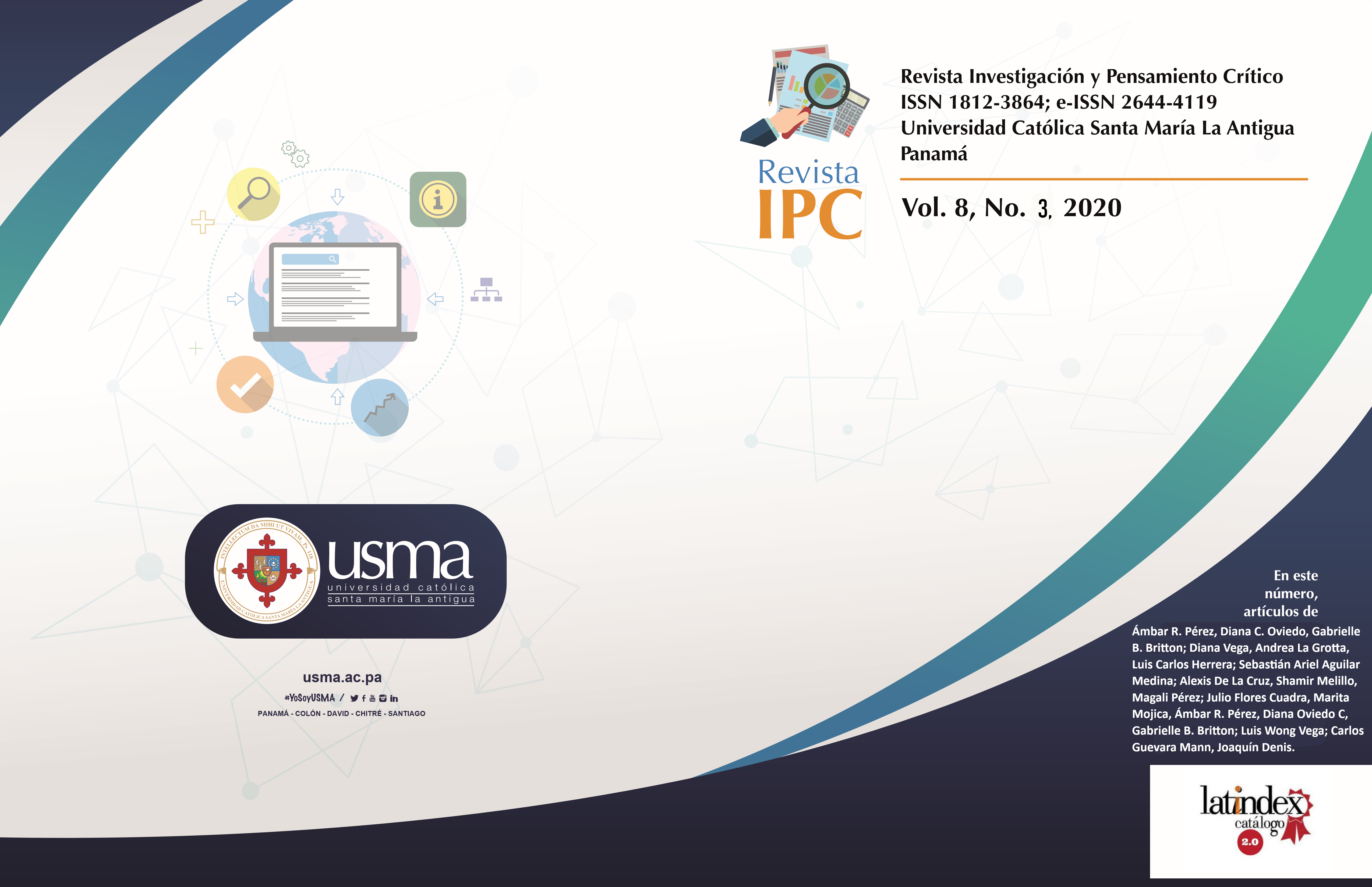Modern Panama, de Conniff y Bigler
Una lectura de nuestra evolución política reciente
DOI:
https://doi.org/10.37387/ipc.v8i3.175Keywords:
reading, political evolution, past, historyAbstract
Cambridge University Press, one of the most prestigious university publishers, published in 2019 Modern Panama: From Occupation to Crossroads of the Americas, whose authors are the well-known historian Michael L. Conniff and the diplomat Gene E. Bigler, both Americans. The Spanish version, modern Panama: From occupied territory to the center of the Americas was published simultaneously by the City of Knowledge Foundation and Novo Art. This review is based on the original text (in English), to which the references and numbers correspond of page indicated below.
A past of tensions
Modern Panama covers our recent history from 1980. The first chapter, however, goes back to the origins of Panama as a nominally independent State, after its separation from Colombia in 1903. This chapter emphasizes the tensions between Panama and the United States at throughout the 20th century, culminating in the events of January 9, 1964. On that occasion, three days of nationalist protest left a tragic death toll of 25 dead (including four US soldiers). The authors highlight the discriminatory treatment received by many Panamanians in the Canal Zone under US administration (1904-1979). Panamanians were excluded and often intimidated by "zonians" and Canal Zone officials, thus helping to create unhealthy relations between both parties.
The 1968 military coup — and the 21-year dictatorship it gave rise to — are also addressed in the first chapter. The 1968 coup fueled the rise to power of the National Guard, initially dominated by two officers, Boris Martínez and Omar Torrijos. Early the following year, Torrijos deposed Martinez and, in collaboration with US intelligence agencies, sent him into exile in Miami. For the next twelve years, Torrijos was the dictator of Panama. After signing two treaties on the canal with the United States, in 1977, he announced a supposed "return to democracy." He relaxed restrictions on political activity and, in 1978, selected one of his collaborators, Aristides Royo, as President of the Republic.
Downloads
Published
How to Cite
Issue
Section
License
1. The authors preserves the patrimonial rights (copyright) of the published works, and favors and allows their reuse.
2. The journal (and its contents) use Creative Commons licenses, specifically the CC BY NC SA type, where: "the beneficiary of the license has the right to copy, distribute, display and represent the work and make derivative works provided you acknowledge and cite the work in the manner specified by the author or licensor."
3. They can be copied, used, disseminated, transmitted and exhibited publicly, provided that: i) the authorship and the original source of its publication (magazine, publisher and URL, DOI of the work) are cited; ii) are not used for commercial purposes.
4. Conditions of self-archiving. Authors are encouraged to electronically disseminate the post-print versions (version evaluated and accepted for publication), as it favors their circulation and dissemination, increases their citation and reach among the academic community.











